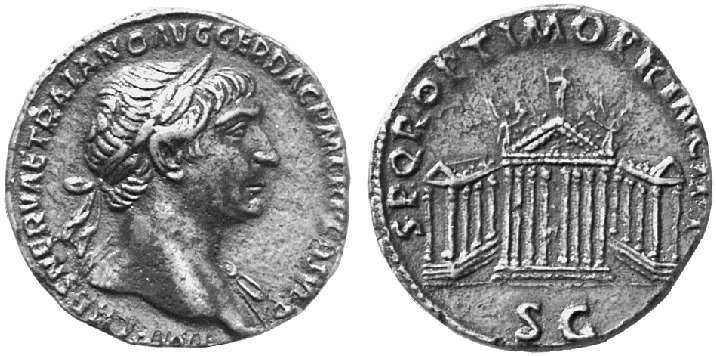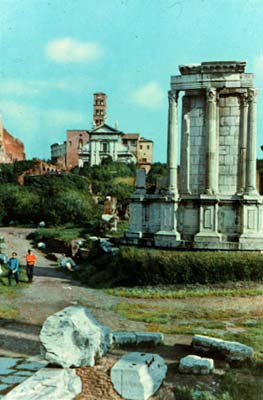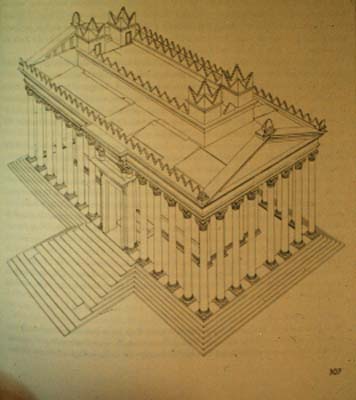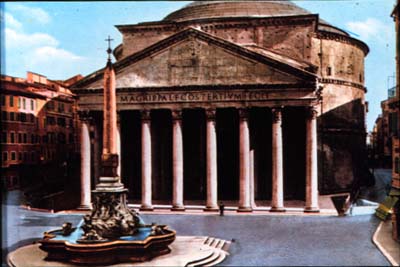
Temples;Juno Temple;Builden on Roman Coins
IOUSAAS, HEOU or DIOSPOLIS PARVA
In Old English literature there are many mentions of pre-Christian temples or groves, an example is a letter from Pope Gregory to Abbot Mellitus, dated to 601 c.e, giving instructions on how to convert the Anglo-Saxons, part of it reads:
'I have come to the conclusion that the temples of the idols in England should not on any account be destroyed. St Augustine must smash the idols, but the temples should be sprinkled with holy water...for we ought to take advantage of well built temples by purifying them from devil worship, and dedicating them to the service of the true god.'
(Translation from 'The Lost Gods of England' by Brian Branston)
La Docrina Secreta VII; Volumen IV
Y Vieron los ángeles de Theos que las hijas de los hombres eran hermosas
Y Vieron los hijos de los ángeles que las hijas de los hombres era hermosas
Comparisons between the Bible and the Septuagint>





 The PANTHEON, constructed by the Emperor Hadrian (117-138 AD), consisted of a rotunda flanked by semicircular niches and a portico. The rotunda is formed by a drum whose walls are 6.2 meters thinck and 21.754 meters in height, supporting a cupola. The total height of the building is the same as its width (150 feet). The largest domed building in existence. There are no windows, but a circular opening 30 feet in diameter at the summit of the dome admits light. The marble floor, slooping from the center toward the sides allows for rain water to pass to the gutter along the walls. The arcitrave bears the inscription M. AGRIPPA L.F. COS. TERTIUM FECIT, indicating that Hadrian chose to "restore" a traditional Etruscan styled Roman temple of the early first century AD in this manner.
The PANTHEON, constructed by the Emperor Hadrian (117-138 AD), consisted of a rotunda flanked by semicircular niches and a portico. The rotunda is formed by a drum whose walls are 6.2 meters thinck and 21.754 meters in height, supporting a cupola. The total height of the building is the same as its width (150 feet). The largest domed building in existence. There are no windows, but a circular opening 30 feet in diameter at the summit of the dome admits light. The marble floor, slooping from the center toward the sides allows for rain water to pass to the gutter along the walls. The arcitrave bears the inscription M. AGRIPPA L.F. COS. TERTIUM FECIT, indicating that Hadrian chose to "restore" a traditional Etruscan styled Roman temple of the early first century AD in this manner.


























